Sky Quality Meter (SQM)
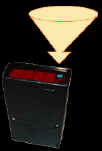 brightness.
To use the meter, simply hold
the SQM overhead while it is aimed at the zenith and press the red button.
After a few seconds the unit will beep and a number is displayed.
Basically, the larger the number the darker the sky. A meter reading of 21.00 would indicate a very dark site, while a
reading of 16.00 would indicate a degraded, light polluted sky. It's that easy.
brightness.
To use the meter, simply hold
the SQM overhead while it is aimed at the zenith and press the red button.
After a few seconds the unit will beep and a number is displayed.
Basically, the larger the number the darker the sky. A meter reading of 21.00 would indicate a very dark site, while a
reading of 16.00 would indicate a degraded, light polluted sky. It's that easy. The SQM measures how much light, coming in from a cone of sky, strikes a sensor. For older models, the "funnel" is about 80 degrees wide; less than 30 degrees for newer models. The meter then converts that amount of light into units of magnitudes per square arc-second, which are admittedly not easy to visualize. For the purpose of Night Vision, we will create a simpler name for the SQM units, to be called "squims." For example, if the meter reads 18.75 magnitudes per square arc-second, we will describe it as "18.75 squims."
Observers must insure that nearby lights are not within the detection cone of the sensor. Similarly, the light of the moon should not influence the sky's darkness, which is indicated by the Darkness line of a Clear Sky Clock. Lastly, SQM readings should be taken after astronomical twilight, when the sun does not contribute any light to the night sky.
|
Measuring Sky
Brightness with an SQM
|
Sample
SQM readings paired with a Clear Sky Clock are at:
See also the SQM Database of global measurements ("Suburb back yard, IN").
At magnitudes.htm is more information on "magnitudes per square arc-second," including the excerpts below:
|
From http://www.astropix.com/HTML/L_STORY/SKYBRITE.HTM:
|
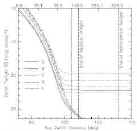 twilight.htm
twilight.htm
Astronomer Ferdinando Patat notes the value in measuring sky glow with an SQM in
the late evening after astronomical twilight.
From the PHM Clear Sky Clock at http://cleardarksky.com/c/PnnHrMPINkey.html:
It is based on Ben Sugarman's Limiting Magnitude calculations page. It takes into account the sun's and moon's position, moon phase, solar cycle and contains a scattering model of the atmosphere. It doesn't consider light pollution, dust, clouds, snow cover or the observer's visual acuity. So your actual limiting magnitude will often be different. |
A. Danko, creator of the Clear Sky Clock, writes:
"Accurate SQM readings should be had only when the clock's darkness line reads 6.0...The darkness line calculates a theoretical sky brightness that does not consider light pollution. But it does consider the phase of the moon, altitude of the moon and altitude of the sun...It clearly shows that even a gibbous moon can have very little effect when it is at only a few degrees altitude. The altitude at which a given phase of the moon affects the brightness at zenith varies in a complex way which the darkness model takes into account...While the 6.0 number the "darkness" line calculates for a sky free of scattered moonlight and sunlight is not quite right (mostly because vision varies hugely from person to person), it's a very good indication of when the sky will be at minimum brightness from light from the sun and moon." ( Copyright ©2006 A. Danko; used with permission.)
An
SQM, courtesy of Unihedron, is featured at a light pollution workshop.
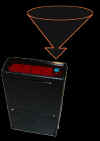
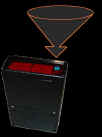
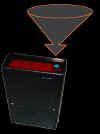
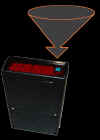
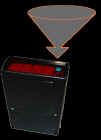
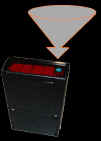
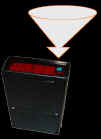

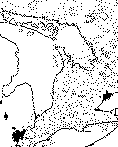 http://www.rasc.ca/light/print/berry.htm
http://www.rasc.ca/light/print/berry.htm